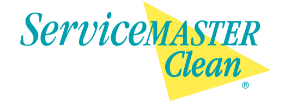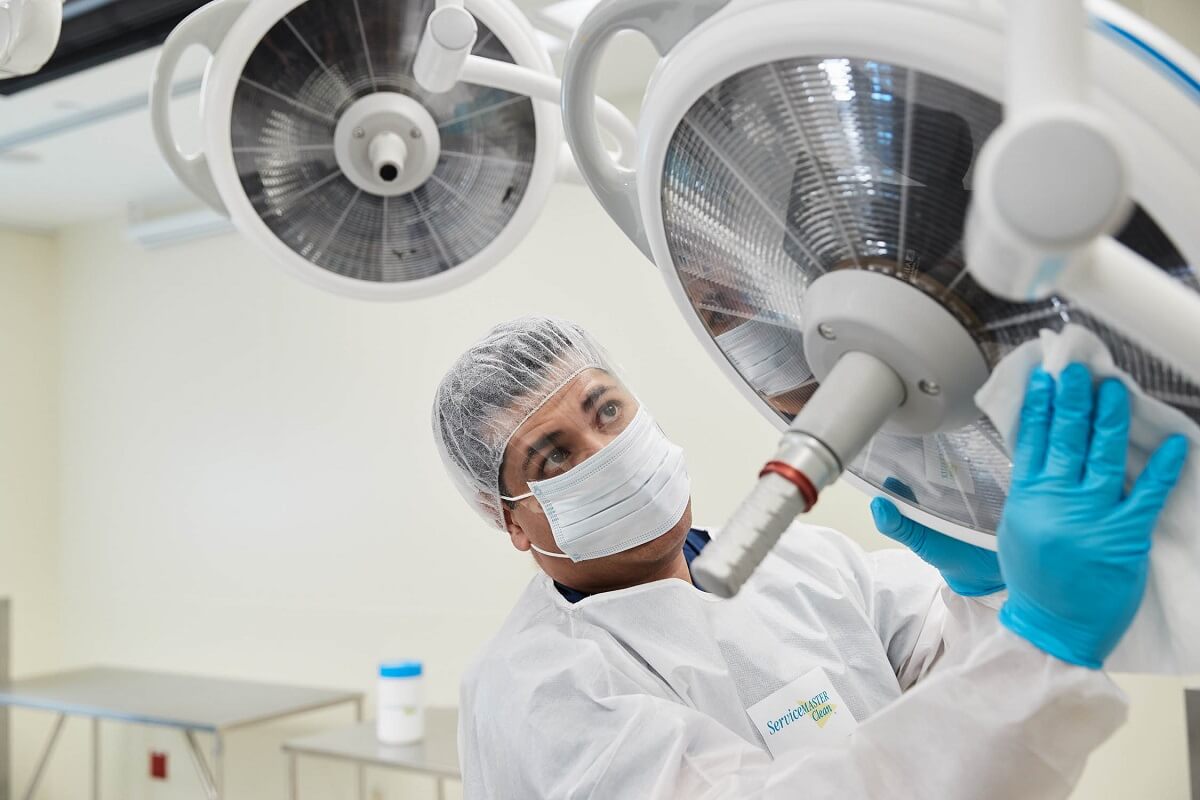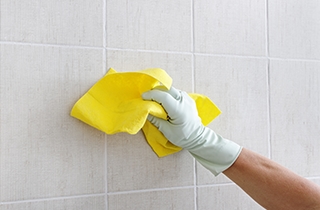Cleaning vs. Sanitizing vs. Disinfecting: What Is the Difference?
Cleaning, sanitizing, and disinfecting are three different processes. All three have a time and place in keeping a business environment safe for employees and anyone else who happens to be there. Whether you serve customers, clients, patients, or students, keeping your place of work clean and disinfected is important for everyone. These processes can be best summed up as the following:
- Cleaning removes debris, dust, and dirt from surfaces, but it doesn’t necessarily kill germs.
- Sanitizing is the process of removing germs either by cleaning or by disinfecting surfaces.
- Disinfecting refers specifically to killing germs through the use of chemicals. It doesn’t physically remove them, but it can lower the risk of spreading infection.
What is Cleaning?
Cleaning involves removing dirt, organic matter, and germs from a surface. It requires washing or scrubbing with water and soaps, detergents, solvents, or enzymes. The type of cloth used while cleaning can make a difference. Microfiber cloths are environmentally friendly, and the material is great for trapping dirt and germs. According to the University of California Davis Medical Center, microfiber mops were able to reduce bacteria by 99% on floors, in comparison to cotton-loop mops which only reduced bacteria on floors by 30% . [1]
One thing to keep in mind is that cleaning doesn’t kill germs. Instead, it removes them from the surface being cleaned. Cleaning can significantly lower the number of germs on a surface and reduce the risk from pathogens by a great deal. But cleaning alone doesn’t guarantee that a surface is safe. Harmful germs can remain after. That’s why cleaning is usually the first step in a process, to be followed by disinfecting.
When to Clean Your Business or Medical Facility
Per EPA guidance, high-touch surfaces like door handles, desks, phones, light switches, and faucets should be cleaned regularly to avoid contamination by employees or customers who may carry the virus. The more often a surface or object is touched, the more often it needs to be cleaned. Anything that is visibly dirty should be cleaned as soon as possible. Some of these cleaning habits are already ingrained—restaurants wash dishes as soon as they’re dirty—but others may not be as common.
Customer-facing keypads can get visibly dirty faster than you’d expect, causing anxiety for customers who have to touch them. Restrooms should be cleaned once daily, at minimum, but for higher-traffic businesses, you may want to clean them as many as ten times in the span of a day. For carpets, it’s wise to vacuum them daily, with professional cleanings anywhere from twice a year to twice a month.
What is Sanitizing?
Sanitization is a process that reduces that number of bacterial contaminants to safe levels, in accordance with public health requirements. Per the CDC, a sanitizer must remove 99.999% of a specific test bacterium in 30 seconds. [2] They can work either by removing the germs, or by killing them. Sanitizers should be used on surfaces that are already clean.
There’s a difference between sanitizing and disinfecting. Sanitization is less thorough, but it kills bacteria quickly. It’s often associated with the food industry, because of requirements dictating that food-contact surfaces be sanitized after use. However, dispatching germs quickly is useful in a lot of fields. You may not always have the time or means to completely remove germs in a pinch but taking a quick second to knock them down to safe levels is important.
Sanitization is usually achieved with chlorine or with solutions based on quaternary ammonia. Applying a sanitizer to a surface and letting it sit for 30 seconds or more typically gets the job done. That 30 seconds is critical - and often overlooked.
Sanitization does have one glaring flaw: While it can wipe out bacteria quickly, it does not remove fungal growth or viruses. That means that while sanitizing is a great, quick way to reduce pathogens, it doesn’t protect against all of them.
When to Sanitize Your Business
Sanitizing is more of a quick-fix suggestion. It’s for when you want to address bacteria quickly as part of your regular routine. It’s important to note that not every sanitizer will affect all viruses, so they should not be relied on as your only solution to remove germs.
When do you use sanitizers? For a start, you can use them at regular intervals on high-touch surfaces between disinfections. For instance, you might take a moment to sanitize a computer keyboard, a desk, or a telephone. Sanitization is not a replacement for routine cleaning and disinfecting, but rather a supplement.
You might also use sanitizers on spaces that aren’t used or touched often, such as long-term storage areas. For out-of-the-way areas, cleaning and sanitizing may be sufficient between prolonged disinfections.
Additionally, sanitizers can be used on sensitive materials that can’t withstand disinfectants. One common example is your hands. Hand sanitizer can be a great component in keeping your workplace sanitary, but you should never apply an EPA-registered surface disinfectant to your skin.
What is Disinfecting?
Disinfectants are approved by the EPA to kill 99.9999% of pathogens. [3] In addition to higher standards for eliminating pathogens by percentage, these products are meant to kill a wider range of pathogens than just bacteria, including viruses. Disinfection can be chemical or physical (often using heat).
The EPA groups disinfectants into several categories:
- Limited disinfectants target a specific major group of microorganisms. They may be effective at killing the kinds of bacteria that cause staph infections, for instance, but not the kinds that cause salmonella.
- General disinfectants are also called broad-spectrum disinfectants. These are effective against both major groups of bacteria and are good for general-purpose use in homes and businesses.
- Hospital disinfectants target even more pathogens, and are intended for use in hospitals, clinics, dental offices, and other healthcare facilities.
You may also see “sterilants,” which target viruses and fungi. Sterilization differs from sanitization and disinfection. It refers to the total eradication of all micro-organisms, rather than the reduction of harmful ones. Another classification you might encounter is “tuberculocide,” which can kill the virus that causes tuberculosis. Tuberculosis isn’t generally spread from surfaces. But tuberculocides are still important, because tuberculosis is very hard to kill. If a substance can kill it, it’s a good indication of that substance’s overall potency.
Routine disinfection is an important part of keeping your workplace clean and preventing the spread of infectious diseases. High-touch surfaces should be disinfected at least once a day, after cleaning them.
At non-healthcare-related businesses, disinfection can be done at your discretion. You don’t need to constantly disinfect every surface. However, high-touch surfaces should still be disinfected regularly to help reduce the risk of spreading disease. Disinfecting surfaces regularly is another way to take care of your employees, who are vital to your business.
Why Are Cleaning, Sanitizing, and Disinfecting Important?
Keeping your place of business free from pathogens is important. It protects your customers, clients, or patients. It protects your employees. It also protects you from lost productivity, lost business, and liability issues.
The specific liability issues around COVID-19 are currently subject to a shifting legal landscape, as various legislative bodies across the country debate whether to shield businesses from liability in that specific case. But regardless of how those issues resolve, there are other consequences to consider. Sick employees may miss shifts or leave altogether, giving you gaps in your schedule coverage and sticking you with the expense of training new hires. A poorly handled outbreak can be disastrous for a business’s reputation, eroding the trust of clientele and employees, alike. That kind of damage can’t be legislated away.
It’s not just about preventing the spread of COVID-19. Proper cleanliness procedures can reduce the risk of diseases like salmonella, influenza, rhinovirus, staph infections, and more. And creating a safe, hygienic environment for the people who work and patronize your business creates trust between you, your employees, and your customers.
How Can I Be Sure to Properly Clean, Sanitize, and Disinfect?
There’s a lot of research that you can do to make sure that you’re keeping your work environment clean and safe. Guidelines are updated on a weekly or even daily basis, and shift our understanding of how COVID-19 and other viruses may affect your business. For example, COVID-19 was initially not known to be airborne, so cleaning guidelines focused on cleaning surfaces and maintaining distance from other people. However, recent findings have shifted our understanding of how COVID-19 is transmitted, emphasizing the need to use appropriate PPE and follow strict steps to avoid exposing your clients or employees to this potentially deadly virus.
You can make sure that you’re using appropriate, EPA-approved disinfectants. (Specifically, using ones approved to kill the virus that causes COVID-19, and/or ones approved to kill emerging pathogens.) Depending on your work environment, you may need to rotate disinfectants periodically to avoid creating disinfectant-resistant strains in your facility.
Each type of business has a different customer base and as such will require a different cleaning focus to ensure that all high-touch areas are addressed. For example, a restaurant will need to disinfect their tables after each customer, but a warehouse may only require cleaning/disinfection after each shift. Each business is unique, and their cleaning/disinfection needs are likewise unique. You can do research on high-touch areas in your industry, so that you know which areas of your business to focus your efforts on.
Your cleaning schedule, disinfection schedule, and priorities will change depending on your scale, as well. A smaller business with a handful of employees may need to clean and disinfect on a daily basis, but a company that has hundreds or thousands of employees will require a comprehensive and regular list of steps that will need to be followed by a professional cleaning team to ensure all areas are cleaned and disinfected on a more regular basis. A single missed area could mean a fast-spreading outbreak that could lead to business closures and/or liability issues.
You may also want to look up specialized equipment like electrostatic sprayers and other industrial disinfection gear, as well as how and where to use them. It’s worth noting that these tools are only as effective as the person handling them, however. Purchasing cleaning equipment may not be the best use of your resources unless you plan on training an employee or inhouse cleaning staff to use it.
Need Professional Cleaning & Sanitization? Contact Us for a Free Estimate!
Alternatively, you can call the commercial cleaning professionals at ServiceMaster Clean. We offer a comprehensive cleaning and disinfection service for your commercial space of business with health-grade disinfection experts. Bringing in trained disinfection experts gives you access to expertise informed by training, research, and experience. It gets you effective, approved cleaners and disinfectants. It gets you people equipped with the tools they need to protect you and your business. It takes the uncertainty out of things and gives you a safe, hygienic environment.
Find your nearest ServiceMaster Clean location and get in contact with a professional who can help you ensure your business is cleaned and disinfected for the safety of your employees and customers. Whether you need event clean up, warehouse cleaning, or routine janitoral services, we've got you covered. Our network of cleaning professionals cover most of the United States and are ready to help you recover your livelihood.
Resources:
1. EPA “Using Microfiber Mops in Hospitals” EPA.gov. Accessed October 2020. https://archive.epa.gov/region9/waste/archive/web/pdf/mops.pdf
2. CDC “Guideline for Disinfection and Sterilization in Healthcare Facilities, 2008” CDC.gov. Accessed October 2020. https://www.cdc.gov/infectioncontrol/pdf/guidelines/disinfection-guidelines-H.pdf
3. EPA “Efficacy Test Methods, Test Criteria, and Labeling Guidance for Antimicrobial Products with Claims Against Biofilm on Hard, Non-Porous Surfaces” EPA.gov. Accessed October 2020. https://www.epa.gov/pesticide-analytical-methods/efficacy-test-methods-test-criteria-and-labeling-guidance-antimicrobial











